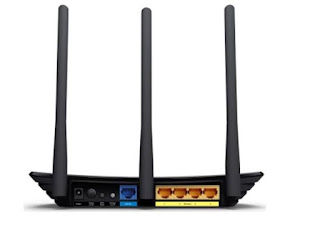What is a router?
A router is a networking device that forwards
data packets between computer networks.
A router is a hardware device that allows the affiliation with each computers in the network. The router is a device that operates in layer three of OSI model (Network Layer). A router uses a routing protocol, which is helpful with finding out the fastest and suitable route to send Data.
A router is a hardware device that allows the affiliation with each computers in the network. The router is a device that operates in layer three of OSI model (Network Layer). A router uses a routing protocol, which is helpful with finding out the fastest and suitable route to send Data.
The router has multiple more and less complex uses. In its most common use, a
router allows several computers to take advantage of the same Internet
connection in a small home or office. In this sense, the router operates as a
receiver of the network connection to take charge of distributing it to all the
equipment connected to it. Thus, a network or Internet is connected with
another one of local area.
Nowadays, it is easy to obtain a router in a economic way
from different brands. There are also those routers that use open source
software and therefore allow a greater economic savings. In addition, software
have been developed that facilitate the operation between networks even if
there is not a dedicated team. Finally, wireless routers have recently been
designed, which operate with fixed and mobile networks. Therefore, the router
can provide a Wi-Fi connection to the different devices within a home, office
or even in a larger space.
Components of the Router:
A router consists of the below major components:
● CPU
● ROM
● RAM
● NVRAM
● Flash Memory
● Interfaces
● Buses
● Power Supply
How to choose a router?
Below are the major point you should taking care whenever you are going
to choose any routers.
1. Fast and stable
2. Stronger Wi-Fi signal
3. Simple setting
4. More Functions: remote control, offline downloading, etc.
5. The router needs to match the broadband in the home
